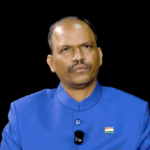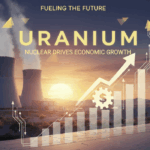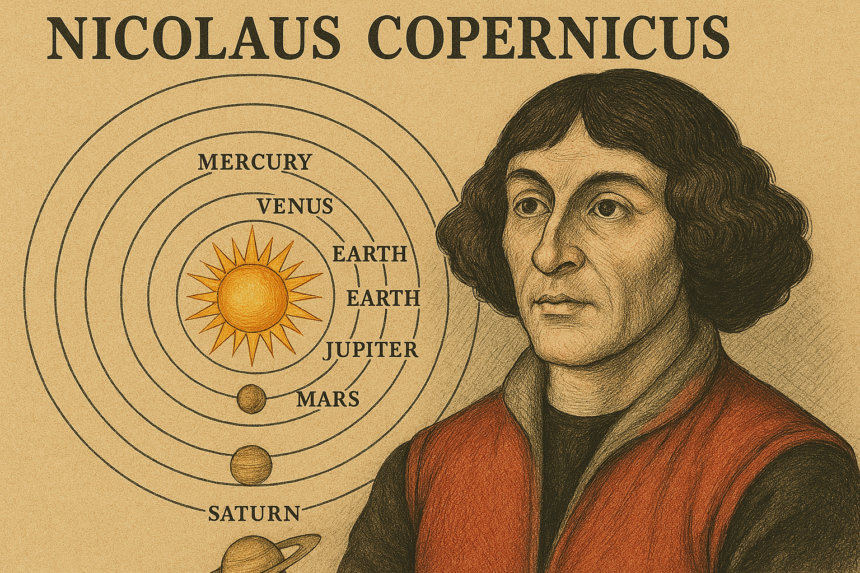The Poles are a resilient and talented nation with a rich industrial and cultural heritage. Poland is currently the fastest-developing country in Europe. The Poles, who have overcome many difficult and challenging historical events, are also world-famous for their outstanding achievements in science, arts and culture. These travel notes are compiled from my visits to Krakow – the first capital of Poland, Wroclaw, and Warsaw, and their museums, historical monuments, and ancient churches. In terms of the industry, I visited the coal, food, and pharmaceutical producers. Moreover, many historical events and endeavours connecting the Mongolian and Polish peoples are shared in these notes.
Brief history of Poland
The history of Poland is a true reflection of the resilience and endurance of its people. In 966, Duke Mieszko established the unified Polish state. Later, during the reign of the Jagiellonian dynasty from 1386 to 1572, the territories of present-day Poland, Lithuania, the Czech Republic, and Hungary constituted one of the most powerful states in Europe. The years of the Polish–Lithuanian Commonwealth, from 1569 to 1795, are considered a golden era of democracy and cultural development. However, due to repeated partitions by Russia, Prussia, and Austria in 1772, 1793, and 1795, Poland ceased to exist as an independent nation for 123 years. Poles regained their independence in 1918, only to face major historical challenges soon after, including World War II and the oppression of communist ideology, which they managed to overcome.
Poland today is located in Central Europe. It is bordered by Germany, the Czech Republic, Slovakia, Ukraine, Belarus, Lithuania, and Russia, as well as the Baltic Sea. With a total area of 313,000 square kilometers, it is the ninth largest country in Europe and five times smaller than Mongolia. Geographically, the country consists mostly of wide plains and rolling hills, with mountainous regions in the south, including the Carpathian and Sudeten ranges. With a population of 38 million, it is the fifth most populous country in the EU. The capital, Warsaw, has a population of 2 million and is the political, economic, and cultural center of the country. Other major cities such as Kraków, Gdańsk, Wrocław, and Poznań are modern, highly developed cities that preserve rich historical and cultural traditions.
One of the most remarkable chapters in Poland’s history is the Warsaw Uprising of 1944. The Polish resistance, known as the Home Army, fought against Nazi German occupiers for 63 days. German forces eventually crushed the uprising, destroying 85% of Warsaw and reducing it to rubble. Despite the defeat, the uprising became a powerful symbol of the Polish people’s fight for freedom and national unity.
In the 1980s, the Solidarity movement, led by Lech Wałęsa, sparked a wave of struggle for democracy. Within a decade, it led to the collapse of the communist regime.
Today, democratic Poland has an economy worth 810 billion US dollars, with a GDP per capita of 24,000 dollars. It is now one of the fastest-growing countries in the European Union.
Science and arts
Poles have made significant contributions to global science and the arts. A total of 18 Polish scholars have been awarded 19 Nobel Prizes. Maria Skłodowska-Curie received the Nobel Prize twice—once in Physics in 1903 and again in Chemistry in 1911. If individuals of Jewish descent with Polish origins are included, the number of Nobel laureates would be even higher.
To highlight two world-renowned Polish figures:
Nicolaus Copernicus – Often referred to as “the man who moved the Earth,” the renowned scientist Nicolaus Copernicus revolutionized humanity’s understanding of the universe. He asserted that the Earth revolves around the Sun—not the other way around. In 1543, he published his heliocentric theory, which sparked a scientific revolution. One of the many monuments commemorating him stands in a square at Jagiellonian University in Kraków. There is also a statue of Copernicus in front of the Mongolian Academy of Sciences building in Ulaanbaatar.
Frédéric Chopin – Known as “the poet of the piano,” Frédéric Chopin is a symbol of Poland’s artistic and cultural heritage. Born in 1810, he composed beautiful romantic melodies inspired by Polish folk music, and his works are performed all around the world. Although he lived in France, in accordance with his final wish, his heart was brought back to his homeland and enshrined in the wall of the Holy Cross Church in Warsaw. In Ulaanbaatar, there is a monument to the great Chopin as well as a street named after him in the Zaisan area.
Economic success and industrial development
After its entry into the European Union, the Polish economy has been growing exponentially, particularly the industrial sector. I highlight energy, mining, agriculture and pharmaceuticals here.
Energy
Poland’s total annual energy consumption is around 170–180 TWh, with an installed generation capacity of 60 GW. Historically, the country has heavily depended on coal, and even today, around 65% of its electricity is generated from coal. However, the share of renewable energy sources such as solar and wind has been steadily increasing and currently accounts for about twenty percent. By the 2030s, Poland aims to transition to a more diversified and low-emission energy system, using nuclear power.
One of the major companies in Poland’s energy market is Horus Energia, which has been operating since 1984, providing comprehensive services related to power generation equipment. The company is actively involved in the research and development of environmentally friendly technologies that reduce carbon emissions. Based on these innovations, they offer clean energy solutions tailored to the needs of customers. Horus Energia produces power generators that combine various renewable sources such as natural gas, biogas, and hydrogen, ensuring reliable and continuous power for businesses. About 25 years ago, the company established a joint venture in Mongolia named Monhorus, which has been operating successfully since.
We also visited the Budryk mine, located in the Silesian Voivodeship in southern Poland, and operated by the company JSW. There are 48 coal deposits across 23 mines in Poland, and JSW operates four of them. Budryk is the world’s deepest coal mine, reaching a depth of 1,500 meters. One of the greatest challenges at this site is the highly explosive methane gas. The gas is continuously extracted and used to generate electricity. The mine’s construction began in 1978, and coal production started in 1994. Since then, 364 kilometers of tunnels have been built, and 84 million tons of coking coal have been extracted.
JSW Group is the largest producer of coking coal in the European Union and also a major coke manufacturer. It operates three coke plants, which together produce 3 million tons of coke annually from 5 million tons of hard and semi-soft coal, along with other strategic raw materials. Their produce is supplied across Europe. With over 2,000 employees, JSW is one of the leading producers and exporters of coke.
Research and development in mining.
We visited the National Research Institute, which has been operating in the Upper Silesian region since 1945, and focuses on mine safety, modern technology, and protecting the environment from the impact of extracting and processing activities. The institute is equipped with a modern laboratory capable of detecting and analyzing the radioactivity of all types of materials and raw resources. It also operates a test mine called “Barbara” in the town of Mikołów. This facility is used for testing new technologies and equipment related to mining operations, as well as for diagnostics and research. The scientific and research outputs of this institute form the foundation of mining safety in Poland and are also applied in many countries around the world.
Agriculture
Poland’s agriculture sector contributed around 3% of its GDP in 2023, which is above the European Union average. The country’s agriculture is highly productive thanks to modern technologies and EU support, resulting in high crop yields and livestock growth. Poland is a major exporter of agricultural products such as apples, berries, poultry meat, dairy products, processed meats, and canned foods, and is the leading apple producer in the EU. I visited Mlekovita, the largest dairy factory in Central and Eastern Europe, located in the city of Wysokie Mazowieckie. Mlekovita operates 26 factories, 25 laboratories, and 36 distribution centers across Poland. The company purchases 8 million liters of milk daily from 15 thousand farmers, employs 5000 people, and produces 1800 dairy products.The company’s total revenue reached 2.2 billion euros in 2022. Mlekovita exports 30% of its products to 160 countries around the world. In Mongolia, their sliced cheese is imported by “APU Dairy”. Polish pickled food products are renowned for centuries-old traditions, natural fermentation methods, their unique sour flavor, and high international export quality. A notable representative is Bracia Urbanek, founded in 1990 by the Urbanek brothers. They are known for their traditionally made pickled cucumbers, beets, cabbage, mushrooms, and fruits using natural ingredients. Their products are exported to over 20 countries. Since 1993, the Urbanek company in Mongolia has been importing over 80 different varieties of their products, distinguished by flavor, variety, and packaging.
Pharmaceuticals
Poland’s pharmaceutical industry ranks fifth in the European Union, after Germany, France, Italy, and Spain. It is a rapidly growing sector contributing 4.5 billion euros annually to the country’s economy (according to Euroactiv). I visited TZF Polfa, a company based in Warsaw that began producing pharmaceutical preparations in 1823. The company currently has 30 production lines, employs over 1,000 people, and manufactures more than 100 types of medicines. Today, it produces antibiotics, painkillers, and cardiovascular drugs, 70 percent of which are supplied to domestic hospitals. Medicines are dispensed strictly by prescription and are manufactured in high-standard, quality-controlled facilities. The company also exports insulin, psychiatric medications, and dermatological treatments to more than 40 countries across four continents. In Mongolia, some of their medicines are imported by Tun-Erdene Pharma and Thymus Monos.
Poland-Mongolia relations
The historical relationship between Poland and Mongolia dates back centuries. The Battle of Legnica in 1241 was one of the key battles in Europe during the Mongol Empire’s westward expansion. Detailed exhibits about this battle can be found in the city’s museum.
Another account of Mongol expansion can be heard in Kraków’s main square, where tourists gather every hour to hear the trumpet call from the St. Mary’s Basilica. According to legend, the melody suddenly cut when the trumpeter sounding the alarm during an invasion was struck by a Mongol soldier’s arrow.
The two countries established diplomatic relations in 1950 and began collaborating in education, trade, and science. Polish experts helped build nine factories in Mongolia, including a brick factory in Darkhan, a wood processing plant in Ulaanbaatar, and a thermal power station in Kharkhorin.
Today, Polish-Mongolian cooperation is actively growing in higher education, science, health, and defense. Since the 1960s, around 1,000 Mongolian students have studied and graduated from Polish universities, and currently around 170 students are enrolled in higher education programs in Poland.
Poland’s long history of Mongolian studies
In 1914, the renowned Polish Mongolist Władysław Kotwicz (1872–1944) came to Mongolia and conducted the country’s first population census. The original records of this census, along with over a million documents related to Mongolian studies, are preserved in the archives of the Kraków branch of the Polish Academy of Sciences.
The main center for modern Mongolian studies in Poland is the Department of Mongolian and Tibetan Studies at the Faculty of Oriental Studies of the University of Warsaw. Today, the department offers bachelor’s, master’s, and doctoral programs and conducts active academic research. The department is headed by Ms. Agata Bareja-Starzyńska, and Mongolian language is taught by Mr. Jan Rogala—both are esteemed scholars who speak excellent Mongolian.
Government ties
High-level state visits between Poland and Mongolia have become a tradition. Recently, in April 2023, Polish President Andrzej Duda visited Mongolia, and in March 2025, Mongolian President Khurelsukh Ukhnaa made a state visit to Poland. These visits were key milestones in strengthening bilateral political and economic relations.
During President Khurelsukh visit, government representatives of both countries signed numerous documents aimed at expanding cooperation in fields such as culture, science, and healthcare. Additionally, a business forum was held in Warsaw, attended by over 180 enterprises from various sectors of both countries. In 2024, the total trade turnover between the two countries reached 105 million dollars, with 104 million dollars worth of exports from Poland to Mongolia and 1 million dollars from Mongolia to Poland. Poland is currently the largest EU exporter to Mongolia.
Furthermore, state honors and medals were awarded in person by President Khurelsukh to several individuals from both countries who have made outstanding contributions to cooperation, especially in healthcare and other sectors.
For example, the title of Distinguished Healthcare Worker was awarded to Dr. Chuluuntsetseg Dashdavaa, director of Poland’s “Otoch Manal” company, professor of Traditional Medicine, and a leading physician. The Medal of Friendship was awarded to Mr. Jan Koblak, president of Horus Energia. The Morin Khuur Ensemble performed a full concert in Poland, showcasing masterpieces of Mongolian national art and culture to Mongolian residents in Poland, distinguished Polish government guests, and members of the cultural and social communities.
President Khurelsukh also met with a cohort of 100 Mongolian students currently studying in Poland under the “Ilgeelt-2100” scholarship program. This official visit by President Khurelsukh Ukhnaa marked a significant milestone in the history of Mongolian-Polish relations.
This concludes a brief summary of the Polish people—who have overcome historical challenges to become a strong, united, and creative nation—as well as the current state of key sectors in the Polish economy and the ever-expanding, multifaceted cooperation between Poland and Mongolia.
March 2025







